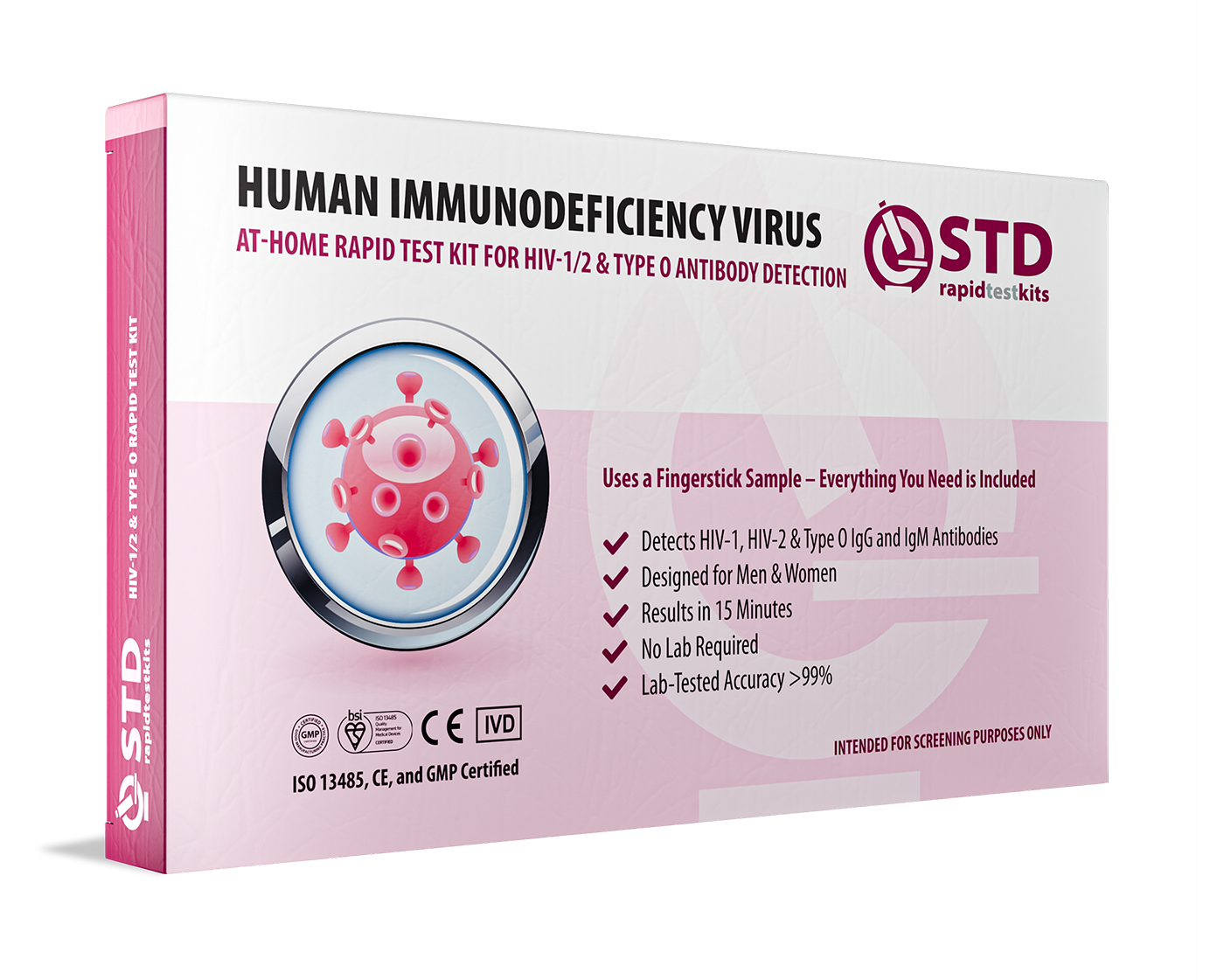Quick Answer: Yes, you can still get an STD even if you use a condom. While condoms significantly reduce the risk of many STDs, they don’t eliminate it completely, especially for infections spread by skin-to-skin contact, like herpes, HPV, or syphilis. Condoms protect best against fluid-transmitted STDs (like HIV, chlamydia, and gonorrhea), but regular testing and open communication remain key to real sexual safety.
How Condoms Actually Work (and Why They're Still Crucial)
Let’s get this straight first: condoms work. When used consistently and correctly, condoms can:
- Reduce the risk of HIV transmission by over 90%
- Lower chlamydia and gonorrhea risk by 60–80%
- Offer strong protection against trichomoniasis and hepatitis B
They work by creating a physical barrier that blocks bodily fluids, like semen, vaginal secretions, or blood, from being exchanged during sex. For STDs that live in fluids, that barrier can be a literal lifesaver.
But condoms aren’t magic. They’re physical objects. And like any object, they have limits, especially when it comes to coverage and human error.

People are also reading: You’re Not ‘Gross’: Unpacking the STD Identity Crisis
STDs That Condoms Protect You From (Mostly)
Let’s talk about the “fluid-borne” STDs. These are the ones condoms are most effective at preventing:
- HIV: Transmission occurs through blood, semen, and vaginal fluids. Condoms block all three.
- Chlamydia & Gonorrhea: Spread via genital secretions. Condoms help stop contact and transfer.
- Trichomoniasis: A parasitic infection mostly passed through fluid exchange. Condoms are helpful here too.
- Hepatitis B: Sexually transmissible, especially through anal sex. Condoms lower risk significantly.
If your partner is positive for any of these, consistent condom use dramatically reduces your risk, but it doesn’t bring it to zero. One slip, tear, or break in consistency can change that equation.
And for some STDs, the game isn’t about fluids at all. That’s where condoms start to fall short.
STDs That Condoms Don’t Fully Protect You From
This is where things get complicated. Some STDs spread through skin-to-skin contact, meaning they can infect areas not covered by a condom at all.
Examples include:
- Herpes Simplex Virus (HSV-1 and HSV-2): Can spread via skin that touches outside the condom zone (e.g., base of penis, vulva, thighs).
- Human Papillomavirus (HPV): Most common STD in the world, spreads through contact, not fluids. Condoms only reduce, but don’t eliminate, transmission.
- Syphilis: Primary sores or rashes can appear in places the condom doesn’t touch, like the scrotum or groin.
- Molluscum contagiosum and pubic lice: Rare, but can transmit via contact around genital areas.
These infections don’t care how “careful” you are. If skin meets skin, and one partner is contagious, there’s a risk. Even with a condom.
Real Talk: Condoms Don’t Cover Everything
The truth is simple and frustrating: condoms don’t cover all genital skin. That means areas like the base of the penis, the testicles, the vulva, and the perianal region can still be exposed during sex.
Even if you’re using condoms perfectly, here’s where exposure can still happen:
- Friction around the base of the penis or labia, common with tight contact
- Manual stimulation before condom use, hands touching fluids or sores before a condom is even on
- Oral sex without barriers, many people skip protection here, increasing the risk of oral herpes, gonorrhea, or syphilis
- Sex toys or fingering, especially when not cleaned between partners
Condoms help. But they can’t protect against everything that touches, rubs, or slides during real-life sex.
That’s not a flaw in condoms, it’s just a limitation of human anatomy. Which is why testing and communication remain your strongest safety tools.
Check Your STD Status in Minutes
Test at Home with RemediumHIV Rapid Test Kit

 For Men & Women
For Men & Women Results in Minutes
Results in Minutes No Lab Needed
No Lab Needed Private & Discreet
Private & DiscreetOrder Now $33.99 $49.00
Breaks, Slips, and Other Condom Fails
Even if you’re using condoms with every partner, every time, mistakes happen. According to CDC and WHO studies, condoms break in roughly 2% of all acts, and slip off in about 1–5%.
Common reasons condoms fail include:
- Not leaving space at the tip for semen
- Using oil-based lubricants with latex, which degrades the material
- Putting it on inside out, then flipping it (already contaminated)
- Expired or heat-damaged condoms (stored in wallets, cars, etc.)
Even if you don’t notice a tear or slip right away, fluid exchange can still happen. That’s why post-exposure testing is crucial, especially if you’re unsure of your partner’s status.
Oral Sex and Condoms: Often Forgotten, Always Risky
Let’s be real: most people don’t use condoms for oral sex. Whether it’s a blow job or cunnilingus, barriers are often skipped. But that doesn’t make the risk disappear.
Oral sex can transmit:
- Herpes, especially HSV-1 from mouth to genitals
- Gonorrhea and chlamydia, particularly throat infections
- Syphilis, sores in or around the mouth can pass it easily
- HPV, which can lead to oral or throat cancers
Dental dams, flavored condoms, or even plastic wrap can help reduce risk, but they’re underused and rarely discussed.
If you’re skipping protection during oral, frequent testing becomes non-negotiable. You might not feel symptoms, but infections can still spread silently.
When Protection Isn’t Enough: The Role of Testing
Here’s what most people forget: condoms are for prevention, not diagnosis. You can use them 100% of the time and still not know if you, or your partner, are carrying an infection.
That’s why testing matters:
- Chlamydia, gonorrhea, and syphilis can be asymptomatic for months
- HPV often has no symptoms at all, but can still be transmitted
- Oral or anal exposure often doesn’t get tested unless you ask
At-home test kits, like those from STD Rapid Test Kits, let you check for multiple STDs without needing a clinic, insurance, or awkward questions. They’re discreet, lab-accurate, and ideal for anyone navigating casual or complex relationships.
Condoms protect. Testing confirms. Together, they give you actual safety, not just the illusion of it.

People are also reading: Is Oral Sex a Potential Mode of HIV Transmission?
What About Other Types of Protection?
Condoms aren’t the only game in town. There are several other barrier methods that people overlook, misunderstand, or don’t use regularly, but they matter too:
- Dental Dams: Thin latex or polyurethane sheets placed over the vulva or anus during oral sex. They help block fluid and skin-to-skin contact.
- Internal (Female) Condoms: These go inside the vagina or anus and offer broader skin coverage than external condoms, including the labia and base area.
- Latex Gloves: Helpful for safer manual stimulation or when using toys between partners.
Each tool has its strengths and drawbacks. Dental dams, for example, aren’t easy to find in stores, and internal condoms cost more than traditional ones. But if you’re engaging in any sexual activity that involves skin, fluids, or friction, having more than one method in your safety toolbox is essential.
Mixing methods, like combining condoms with regular testing and communication, gives you a layered defense. Think of it less like a single barrier and more like a security system. The more layers, the safer you are.
“I Got an STD Even Though I Used Protection”, What Now?
If you’ve been using condoms faithfully and still tested positive, it can feel like the world betrayed you. You might blame yourself, your partner, or just spiral into guilt and fear.
Here’s what you need to know:
- You didn’t fail. The system did. The way we talk about condoms as foolproof protection sets people up for disappointment.
- You are not dirty. You are not irresponsible. Most STDs are highly transmissible and often invisible. Catching one doesn’t mean you’re reckless, it means you’re human.
- You’re not alone. Millions of people test positive every year while using protection. It’s not rare. It’s normal.
The next step? Treatment if needed. Partner notification. And maybe most importantly, emotional support. You don’t have to process this alone. Talk to a doctor who listens. Reach out to a friend who won’t judge. Or find a forum where people know what you’re going through.
The Condom Myth: “Safe Sex” vs. “Safer Sex”
Let’s retire the phrase “safe sex.” It’s a myth. A cultural fantasy. A misleading idea that one method or action can make sex completely risk-free.
The real term is “safer sex”. It acknowledges the reality: all sex comes with some level of risk. But we have tools, like condoms, testing, vaccines, and honest conversations, that reduce that risk dramatically.
Safer sex doesn’t mean boring sex. It means smart sex. Respectful sex. Sex that honors your body, your health, and your peace of mind. And yes, it still includes fun, spontaneity, and connection. Protection isn’t the enemy of pleasure, it’s what lets you enjoy it without the fear.
Check Your STD Status in Minutes
Test at Home with Remedium3-in-1 STD Test Kit

 For Men & Women
For Men & Women Results in Minutes
Results in Minutes No Lab Needed
No Lab Needed Private & Discreet
Private & DiscreetOrder Now $69.00 $147.00
For all 3 tests
Condom Stats Everyone Should Know
Let’s break down some of the key numbers you won’t always hear in sex ed:
- Latex condoms are 98% effective at preventing pregnancy with perfect use, but only about 85% with typical use.
- They reduce HIV transmission by over 90% when used every time.
- They reduce the risk of gonorrhea and chlamydia by about 60–80%, depending on correct use and exposure site.
- Protection against HPV and herpes varies widely based on coverage and location of contact.
What this means: condoms are a key defense, but not a standalone one. They're part of a bigger strategy that includes testing, conversation, vaccination, and informed choices.
What About Pre-Cum? Can It Still Transmit STDs?
Yes, pre-ejaculate (pre-cum) can carry STDs, especially HIV, chlamydia, and gonorrhea. Even if ejaculation happens after the condom is on, any skin-to-skin or fluid contact before that can still expose partners to risk.
Some STDs, like herpes or HPV, don’t even require fluids to transmit. Just contact with an infected area, potentially even from unprotected genital rubbing (“dry humping”), can be enough.
Condoms are most protective when worn before any genital contact occurs. Not just for penetration, but for everything leading up to it.
STDs from Anal Sex: Higher Risks, Higher Stakes
Anal sex, whether receptive or insertive, comes with unique risks. The rectal lining is thinner and more prone to small tears, which can increase the chances of transmitting fluid-borne STDs like HIV, gonorrhea, and hepatitis B.
Even with condoms, anal sex can involve:
- More friction and breakage of condoms due to tightness
- Less natural lubrication, increasing tear risk (use lots of water-based lube!)
- Skin contact beyond the condom, especially near the anus and buttocks
Protection matters even more here. Regular testing is critical for anyone having anal sex, especially without consistent barriers.

People are also reading: Can Men Even Tell They Have Trich? Why It Spreads Silently
The Myth of Monogamy as Protection
Being in a monogamous relationship can reduce STD exposure, but only if both partners are tested, uninfected, and truly exclusive. Many couples assume monogamy equals immunity, and that’s not always true.
STDs like HPV and herpes can remain in the body for years without symptoms. A partner could have acquired it long before your relationship and only show signs later. That’s why testing before and during relationships matters, regardless of exclusivity.
Monogamy is a relationship choice. It’s not a medical status.
Emotional Safety Is Part of Sexual Safety
Using condoms and getting tested is about protecting your body, but don’t forget your heart and mind. STD fear, anxiety, and shame can wreak havoc on self-esteem, especially if you thought you were “doing everything right.”
Talk to your partners openly. Ask questions without fear. Set boundaries that protect both your body and your peace of mind.
And if you’re feeling scared or confused, you’re not alone. Support groups, sex-positive communities, and accessible testing kits like those from STD Rapid Test Kits exist for a reason: to help you feel less alone, and way more in control.
Check Your STD Status in Minutes
Test at Home with RemediumTrichomoniasis Test Kit

 For Women
For Women Results in Minutes
Results in Minutes No Lab Needed
No Lab Needed Private & Discreet
Private & DiscreetOrder Now $33.99 $49.00
FAQs
1. Can you get an STD if a condom breaks?
Yes. When a condom breaks, fluids or skin contact can happen, which can spread STDs like chlamydia, gonorrhea, or herpes. If it happens, get tested.
2. What STDs can condoms not completely stop?
Herpes, HPV, and syphilis can spread through skin-to-skin contact outside of the condom area. Condoms lower the risk, but they don't get rid of it completely.
3. Are condoms that go inside better than those that go outside?
Internal condoms cover more area, which might help stop skin-to-skin transmission a little bit more. But both types work well if you know how to use them.
4. Should I still get tested if I always wear a condom?
Yes. Some STDs can still be passed on through oral sex or skin that isn't covered, and many of them don't show any signs. Testing is very important.
5. Is it okay to use condoms more than once?
No. You can only use a condom once. Using it again makes it much more likely to break and spread.
6. Do condoms stop STDs from spreading when you have oral sex?
They can help, but only if you use them every time you have oral sex. Most people don't use protection when they have oral sex, which makes it easier to get herpes, gonorrhea, and syphilis.
7. What should I do if I'm allergic to latex?
Instead of latex condoms, use polyisoprene or polyurethane condoms. They protect against STDs in the same way, but they don't make people allergic.
8. Can you get an STD from mutual masturbation?
It's not very common, but it can happen, especially if partners share fluids. To lower the risk, wash your hands and toys after each use.
9. How often should I get tested if I use condoms?
You should get tested every three to six months, even if you always use condoms, if you have more than one sexual partner or are worried about getting sick.
10. What if I'm too embarrassed to buy a test?
You can get STD Rapid Test Kits and other at-home STD test kits sent right to your door. You don't need a clinic, insurance, or an ID.
It’s Not About Perfection, It’s About Protection
You don’t need to be perfect. You don’t need to do everything “right” every time. You just need to be informed, intentional, and unashamed of caring for your body.
Condoms are powerful tools. But they’re not shields of invincibility. They’re one layer. A helpful, life-saving, risk-reducing layer, but still just one. And they work best when paired with honesty, testing, and respect, for yourself and your partners.
If you’re sexually active, STD Rapid Test Kits offers fast, accurate, discreet at-home tests that help you stay informed without the awkward clinic visits. Testing is care. Testing is control. And you deserve both.
Don’t rely on myths. Don’t rely on “just a condom.” Rely on your power to protect yourself completely.
Sources
1. Condom Use: An Overview – CDC
2. 9 STIs and STDs That Condoms Don't Always Prevent – Healthline
3. What STDs Cannot Be Completely Prevented by Condoms? – Verywell Health
4. Do Condoms Protect Against All STIs? – Medical News Today
5. Does Condom Use Offer Protection From All STDs? – Desert Star Family Planning










